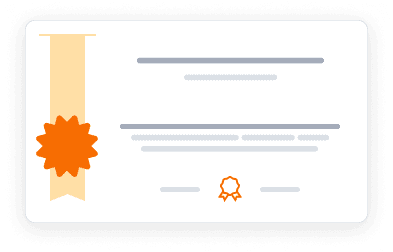This course is part of multiple programs. Learn more.
This intermediate-level course explores machine learning fundamentals with a focus on developing predictive, regression, and classification models using Python. Students will learn how data science is supported by machine learning techniques, which fall into two main categories: Supervised and Unsupervised Learning. The four-module curriculum begins with an introduction to data modeling, where students install necessary software and create simple linear regression models to understand machine learning's potential. The second module covers regression and classification methods, teaching students to define mathematical models for prediction, analysis, and pattern identification to support decision-making. In the third module, students learn variable selection techniques and data preparation methods to optimize prediction and control models using various Python-based machine learning approaches. The final module explores optimization techniques for complex models, including clustering algorithms and time series analysis for more precise predictions. Throughout the course, students will recognize machine learning's applications in robotics while building practical skills in model construction, optimization, and implementation. By course completion, participants will be able to create effective predictive models, apply optimization techniques, and implement machine learning solutions for real-world problems.
4.1
(8 ratings)
12,598 already enrolled
Spanish
Spanish
What you'll learn
Build regression and classification models to identify patterns and make predictions Apply optimization techniques to improve machine learning model performance Implement time series analysis for forecasting future trends and behaviors Develop clustering algorithms for grouping similar data points Create predictive models using Python-based machine learning libraries Select appropriate variables and prepare datasets for optimal model training Recognize machine learning applications in robotics and automation Differentiate between supervised and unsupervised learning approaches Evaluate model accuracy and make necessary adjustments Implement complete machine learning workflows from data preparation to prediction
Skills you'll gain
This course includes:
PreRecorded video
Graded assignments
Access on Mobile, Tablet, Desktop
Limited Access access
Shareable certificate
Closed caption
Get a Completion Certificate
Share your certificate with prospective employers and your professional network on LinkedIn.
Created by
Provided by

Top companies offer this course to their employees
Top companies provide this course to enhance their employees' skills, ensuring they excel in handling complex projects and drive organizational success.





There are 4 modules in this course
This course provides a comprehensive introduction to machine learning with a focus on predictive modeling using Python. The curriculum is structured in four progressive modules covering the essential aspects of machine learning implementation. Students begin with fundamentals of data modeling through linear regression, establishing a foundation for understanding prediction capabilities. The second module deepens knowledge by exploring both regression and classification methods, teaching students to define mathematical models that enable pattern identification and informed decision-making. In the third module, students learn model optimization techniques, including variable selection and data preparation methods that enhance prediction accuracy. The final module advances to more complex applications, covering clustering algorithms for unsupervised learning and time series analysis for temporal predictions. Throughout the course, there's a strong emphasis on practical implementation using Python, with students building actual models rather than just studying theory. The approach balances technical concepts with hands-on application, enabling students to develop skills immediately applicable to real-world problems in various fields, including robotics, finance, marketing, and scientific research.
Introducción al modelado de datos
Module 1
Regresión y clasificación
Module 2
Mejorando tus modelos
Module 3
Agrupamiento y series de tiempo
Module 4
Fee Structure
Individual course purchase is not available - to enroll in this course with a certificate, you need to purchase the complete Professional Certificate Course. For enrollment and detailed fee structure, visit the following: Inteligencia Artificial y Robótica, Python aplicado a la Ciencia de Datos
Payment options
Financial Aid
Instructors
PhD in Computer Science at Anáhuac Universities
He teaches Data Science and Python at Anahuac Online. He holds a PhD and Master's degree in Computer Science from the Technological Institute of Ciudad Madero.
PhD in Computer Science at Anáhuac Universities
Professor of Data Science and Python at Anahuac Online. He holds a PhD and Master's degree in Computer Science from the Technological Institute of Ciudad Madero.
Testimonials
Testimonials and success stories are a testament to the quality of this program and its impact on your career and learning journey. Be the first to help others make an informed decision by sharing your review of the course.
Frequently asked questions
Below are some of the most commonly asked questions about this course. We aim to provide clear and concise answers to help you better understand the course content, structure, and any other relevant information. If you have any additional questions or if your question is not listed here, please don't hesitate to reach out to our support team for further assistance.





